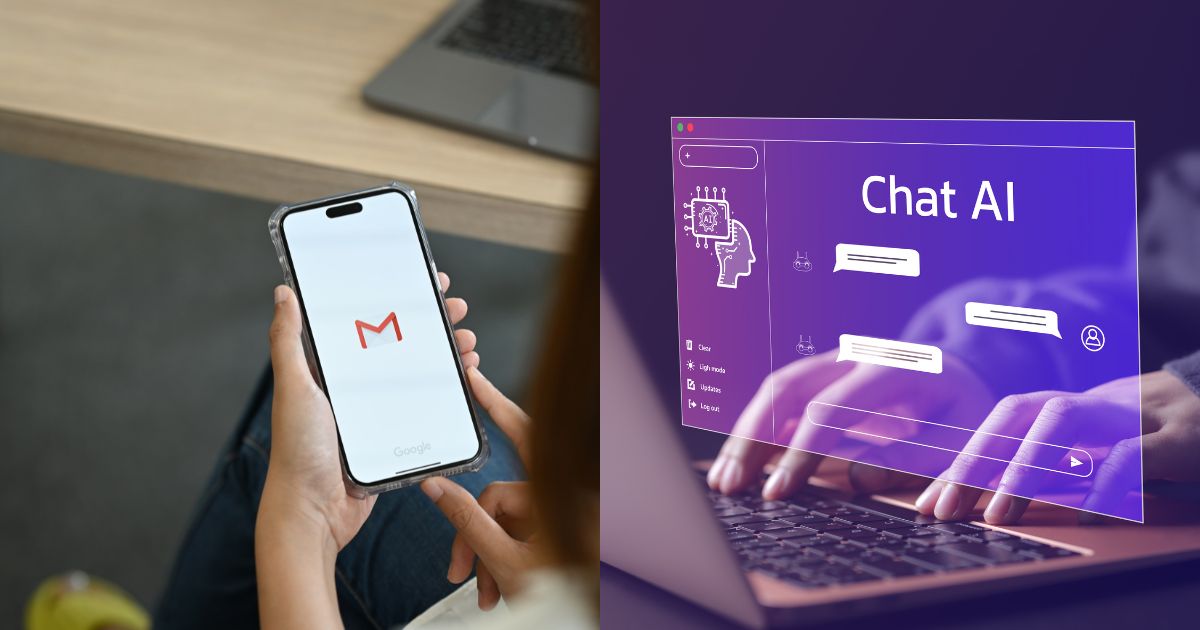AI has officially begun to take over our daily lives. Several platforms have integrated artificial intelligence to make user experience smoother, automated and quicker. Google is constantly working on its Gemini ecosystem (formerly known as Bard), a generative artificial intelligence chatbot. Even Google’s popular product, Gmail, now has AI, which helps users to enhance email management and productivity.
The AI feature in Gmail helps with writing, summarization, and improved search capabilities. Though there’s no denying that AI is making our lives easier, it’s time to seriously rethink the other side of the coin. With the rise in AI technology in the email space, companies such as Symantec and Hoxhunt have highlighted AI-driven phishing attacks that can outsmart human defenses.
View this post on Instagram
Tech giants like Google and Microsoft claim that they catch “more than 99%” of the spam, phishing and malware targeting user inboxes. And yet we can’t ignore the rest 1%. Millions of messages that are potentially spam can slip into inbox of the users and it wouldn’t be long when AI attacks would be unstoppable.
Hoxhunt points out, “AI agents can now out-phish elite human red teams, at scale.”
Our lives are now directly connected to Gmail. From our pictures to bank statements to OTPs, our Gmail is now our most prized possession. It is even linked to our work related documents, and social media handles. Basically, Google products including Gmail have data of every aspect of our lives.
But Google has constantly upgraded its security with changing time. Apart from basic security feature such as two-factor authentication, it’s recent innovations are meant to tackle relatively newer problems. Gmail now has enhanced sender authentication and cloud-based AI filtering. It also has in development shielded addresses, to ensure that the user data and activity is safe. However, Google’s most recent updates have made us to reevaluate the privacy concerns.
On April 2, 2025, Google announced that it is “making end-to-end encrypted emails easy to use for all organizations.” It further explains that this new update will allow “enterprise users to send E2EE messages to any user on any email inbox with just a few clicks.”
For now, the feature has been launched in beta where E2EE emails can be send within own organization. But later this year, the full update will be rolled out to all users where an enterprise will be able to send E2EE emails to any email inbox.
Ars Technica claims that “it’s not true E2EE” as there’s a catch in the new feature. “The reason being that the keys protecting the secure email traffic sit within the client-side infrastructure, not within the actual ‘end’,” the portal explains.
“The new feature is of potential value to organizations that must comply with onerous regulations mandating end-to-end encryption. It most definitely isn’t suitable for consumers or anyone who wants sole control over the messages they send. Privacy advocates, take note,” it further raises concern.
This brings us back to Gmail’s use of AI. Few days before introducing E2EE, Google announced, “Gmail is rolling out a smarter search feature powered by AI to show you the most relevant results, faster… Search results now factor in elements like recency, most-clicked emails and frequent contacts. With this update, emails you’re looking for are far more likely to be at the top of your search results.”
But the thing is, its two biggest updates—E2EE and AI search don’t work together because Google confirmed that E2EE messages “are completely excluded” from AI search. “We do not have the key to decrypt, so we literally cannot read the message,” the tech giant said as per Forbes.
And we’re bringing even more helpful AI capabilities to the Workspace tools you use every day, including:
🎧 New audio generation features in Docs
✏️ Help me refine — your personal writing coach in Docs
🎥 High-quality, original video clips in Vids, powered by Veo 2
📊…— Google (@Google) April 9, 2025
The problem boils down to the user who must choose whether to prioritize enhanced security with E2EE or the benefits of AI-driven features. For now, the email system seems to require a fundamental redesign to provide the immediacy and privacy that modern communication tools possess.
With the ever changing technology, users’ expectations also changes. This is evident from the demand for a more secure and efficient communication platform. We hope that Goggle can find a definite path while juggling between AI and enhanced security.















